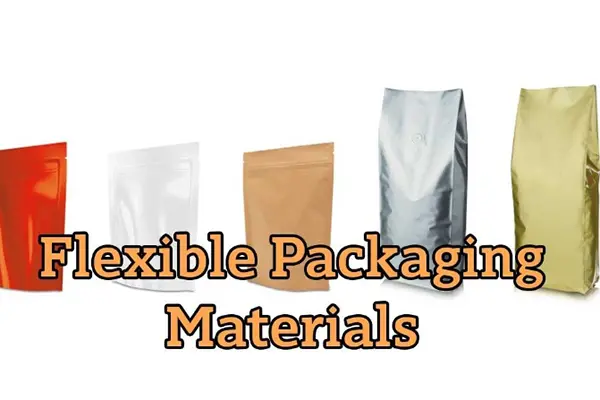Flexible packaging has become a vital part of modern industries, providing an efficient, lightweight, and versatile solution for protecting and presenting products. Whether it’s food, pharmaceuticals, cosmetics, or industrial goods, flexible packaging offers numerous benefits, including reduced material use, longer shelf life, and ease of storage. But what exactly are the materials used in flexible packaging, and how do they contribute to its advantages?
This article explores the three main types of materials commonly used in flexible packaging: plastic, paper, and aluminum foil. Each of these materials brings unique properties to the packaging process, offering different benefits depending on the application.
1. Plastic: The Most Versatile Material
Plastic is by far the most widely used material in flexible packaging. Its versatility, lightweight nature, and ability to form various shapes and sizes make it ideal for many industries. From pouches and bags to wraps and films, plastic-based flexible packaging dominates the market.
Types of Plastic Used in Flexible Packaging
Several types of plastic polymers are used in flexible packaging, including:
- Polyethylene (PE): One of the most common plastics used, PE comes in various forms, such as high-density polyethylene (HDPE) and low-density polyethylene (LDPE). PE is flexible, resistant to moisture, and cost-effective, making it ideal for packaging food products, personal care items, and household goods.
- Polypropylene (PP): Known for its strength and durability, PP is used in packaging products that require higher resistance to heat and impact. It is commonly found in snack packaging, bags, and some frozen food applications.
- Polyethylene Terephthalate (PET): PET offers excellent barrier properties, keeping oxygen and moisture out, which helps preserve the freshness of products. It’s widely used in packaging for products like chips, baked goods, and other perishable foods.
Benefits of Plastic in Flexible Packaging
- Lightweight: Plastic packaging reduces shipping costs and is easier to handle.
- Durable: It provides protection against external factors like moisture, oxygen, and light.
- Cost-Effective: Plastic is relatively cheap to produce, and advances in recycling technology are making it more environmentally friendly.
However, one major concern with plastic is its environmental impact, particularly regarding disposal and recycling. To address this, many companies are moving towards using recyclable plastics or biodegradable alternatives.
2. Paper: The Sustainable Option
As the demand for eco-friendly packaging grows, paper has become a popular material in flexible packaging. Paper is biodegradable, renewable, and recyclable, making it an excellent choice for companies looking to reduce their environmental footprint. Paper-based flexible packaging is particularly common in industries like food, retail, and consumer goods.
Types of Paper Used in Flexible Packaging
- Kraft Paper: This is a durable, tear-resistant type of paper often used for packaging products like flour, sugar, or coffee beans. Kraft paper is known for its strength and can be laminated with other materials to enhance its barrier properties.
- Coated Paper: To improve paper’s resistance to moisture and grease, it can be coated with materials like wax or plastic. Coated paper is often used in food packaging applications, such as sandwich wraps and snack bags.
Benefits of Paper in Flexible Packaging
- Environmentally Friendly: Paper is biodegradable and can be easily recycled, making it one of the most sustainable packaging materials.
- Printability: Paper offers excellent print quality, which is important for branding and marketing purposes.
- Renewable Resource: Paper comes from trees, a renewable resource, and responsible forestry practices can make paper packaging even more sustainable.
Despite its sustainability, paper has some limitations, such as lower barrier properties compared to plastic and aluminum. It may also tear or degrade when exposed to moisture without proper coating or lamination.
3. Aluminum Foil: The Ultimate Barrier Protection
Aluminum foil is another key material used in flexible packaging, particularly for products that require a high level of protection from light, oxygen, and moisture. This material is commonly found in packaging for food, pharmaceuticals, and other sensitive goods that need long shelf life and freshness preservation.
Uses of Aluminum Foil in Flexible Packaging
- Food Packaging: Aluminum foil is used for packaging perishable goods such as dairy, meat, and frozen foods. It provides excellent protection against moisture, light, and bacteria.
- Pharmaceutical Packaging: In the pharmaceutical industry, aluminum foil is used for blister packs and medicine pouches. It ensures that the product remains sterile and protected from environmental factors.
- Retort Pouches: For products like ready-to-eat meals, aluminum foil is used in retort pouches, which are sealed packages that can be heat-treated to sterilize the contents without compromising the barrier properties of the packaging.
Benefits of Aluminum Foil in Flexible Packaging
- Excellent Barrier Properties: Aluminum foil offers the best protection against oxygen, moisture, and light, making it ideal for sensitive products.
- Heat Resistance: It can withstand high temperatures, which is essential for products that require sterilization or heat treatment.
- Durability: Aluminum foil is highly durable and does not tear easily, providing strong protection for the contents inside.
However, aluminum foil is not without its challenges. It is more expensive than plastic or paper, and recycling aluminum can be energy-intensive. Despite this, its unparalleled barrier properties make it indispensable in certain applications.
Conclusion
Flexible packaging relies on a combination of plastic, paper, and aluminum foil to meet the diverse needs of various industries. Plastic remains the most versatile material, offering durability, cost-effectiveness, and flexibility. Paper, on the other hand, stands out for its sustainability, and as the demand for eco-friendly options grows, it is becoming increasingly popular. Finally, aluminum foil provides unmatched protection for sensitive products, particularly in the food and pharmaceutical sectors.
Each of these materials brings unique benefits, and manufacturers often use them in combination to create packaging that offers the best of all worlds—protection, sustainability, and cost-efficiency.
Post time: 09-13-2024


